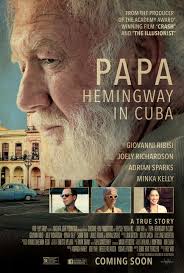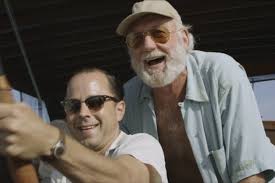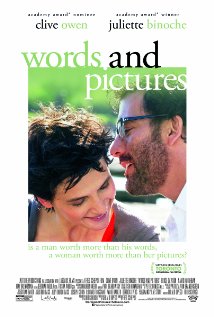A Few Good Films for Artists and Authors
By Angela Shaw
It happened one night when, all of a sudden, our TV screen went black. Reluctantly, we unwrapped the dusty cable box sent several months prior and faced the dreaded installation. It didn’t take long to discover our overweight TV had no HTML input. So, we happily dragged it to the curb for bulk trash, followed by the media cabinet the huge TV had called home.
The time had come for a trip to Costco; time to shop for a svelte flat-screen and slender table on which the trimmed-down TV would sit. This transition into the 21st century hailed a new chapter in our family entertainment—albeit much later than for most.
As new participants in the world of streaming and digital video, we’ve had the surprising pleasure of seeing some decent older films. It took a bit of digging through endless free Roku options, but with a little tenacity we struck a vein of cultural gold, minus having to rack up a slew of subscriptions.

The first film, Papa: Hemingway in Cuba was set in Ernest Hemingway’s beautiful and turbulent mid-century Cuba. A brave Miami-based journalist sends a fan letter to the famous author. To the reporter’s surprise, his literary idol replies. A friendship ensues, bringing fishing excursions, parties and intimate visits at Hemingway’s Cuban estate. It was mentor and mentee; father and son; a relationship with its fair share of happiness and heartache. Although the movie garnered mixed reviews, it provided intrigue into the revered author’s end-of-life personal struggles. It may even rouse the viewer to plan their summer vacation near Hemingway’s home in Cuba or Key West. Or at the very least add The Old Man and the Sea or In Our Time to their summer reading list.

The next screen gem was Words and Pictures. Two teachers at an upscale prep school initiate a campus-wide competition over which is the superior medium: language or art; the written word or the painted canvas. Paul Grabowski’s exquisite soundtrack of songs and orchestral pieces buoys the viewer through a somewhat formulaic production. Not unexpectedly, teachers, Jack and Dina’s friendly rivalry turns into a messy romance. Jack, the writer, battles alcoholism and Dina, the artist, struggles to paint despite degenerative rheumatoid arthritis. Herein the best parts of the movie are found, as her diminishing fine motor skills force her to explore different painting methods. Using a rolling desk chair, she paints on a floor canvas with a huge brush hanging from a pulley. As life throws age, ailments and addictions that make the creative process nearly impossible, the two triumph both in their art and their relationship.

Like Papa Hemingway, another literary-themed discovery was the film, Genius. This 1920s story portrays the relationship between author, Thomas Wolfe and Scribner’s renowned editor, Maxwell Perkins (F. Scott Fitzgerald, among others).
Writers will easily relate to the painful editing process as Wolfe’s thousand page draft is slashed to hundreds instead. Wolfe delivers his handwritten manuscript in several boxes spilling over to Perkins’ Scribner office. His novel comes in looking like an overgrown bougainvillea. Wolfe revels in his profuseness of his words as if they are glorious blossoms dripping on leggy branches. But Max Perkins wins Wolfe over to trim his precious, yet stunning text. Each pruned phrase lays on the ground to reveal a more beautiful line of brilliant flowers on a cleaner landscape. Despite a great cast (Nicole Kidman, Jude Law, Colin Firth), Genius also did not make the reviewers’ 5-star list.

But exactly what constitutes a good movie? Like art, is beauty in the eye of the beholder? Can we enjoy a movie without having our internal critic turned on? Can we refrain from rating the director, actors and effects while we nibble on popcorn? It’s possible. Perhaps the true value of a film is its ability to inspire. If the story speaks to the viewer in some way, then it’s a good film and well worth seeing.

